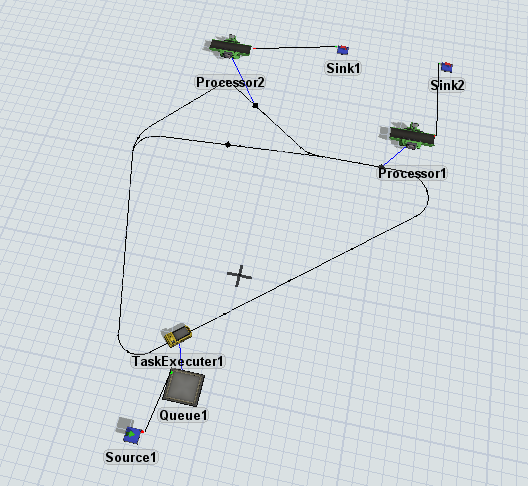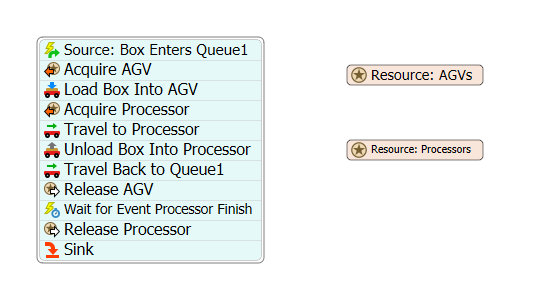Hello, I built this model in which three task executers pick items from a queue (connected to a source) and deliver the items in two different processors. As I built it, the task executers prioritize Processor 1, and if this one is not available goes and delivers the item in Processor 2.
Right now, the task executer returns to the control point connected to the queue and waits for any of the processors to finish until it starts loading the item from the queue. I want the task executer to load the item from the queue as soon as possible, no matter the processors finished or not. Also, when the item is loaded, i want the task executer to go to the control point connected to Processor 1 and wait there for the next available Processor, and when any of the processors becomes available, goes and delivers the item there.
I would appreciate if someone can provide some help for this issue.
Regards!


